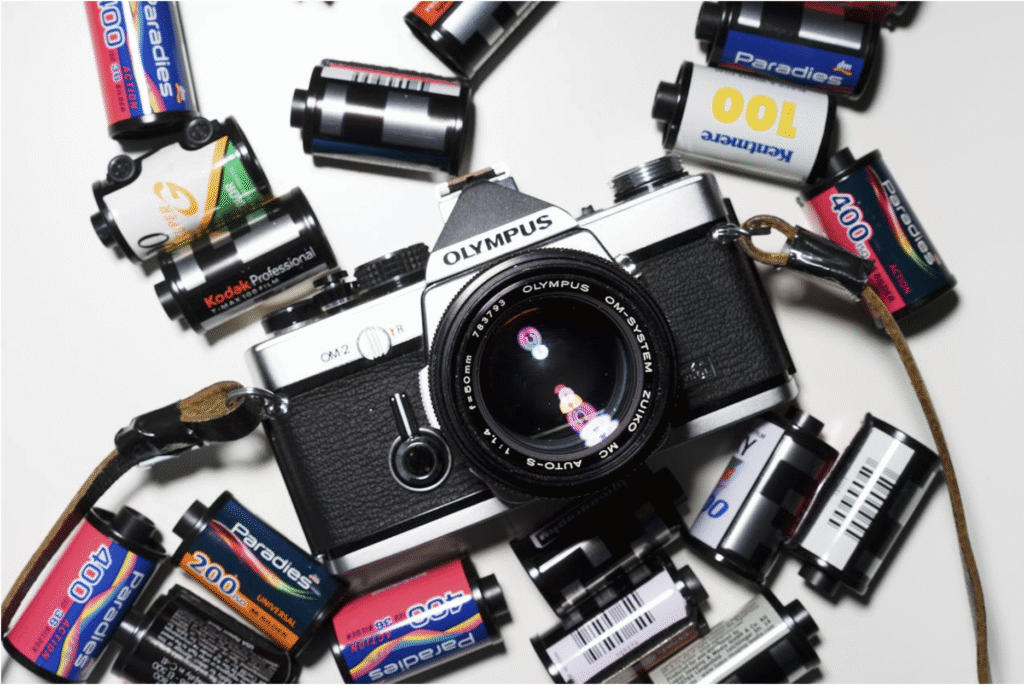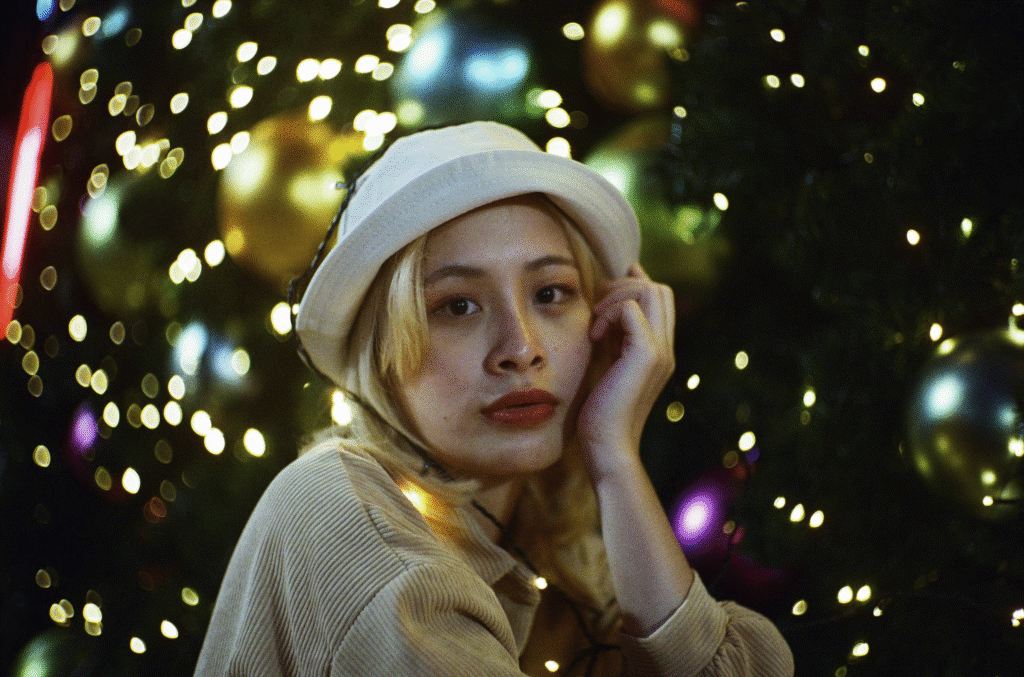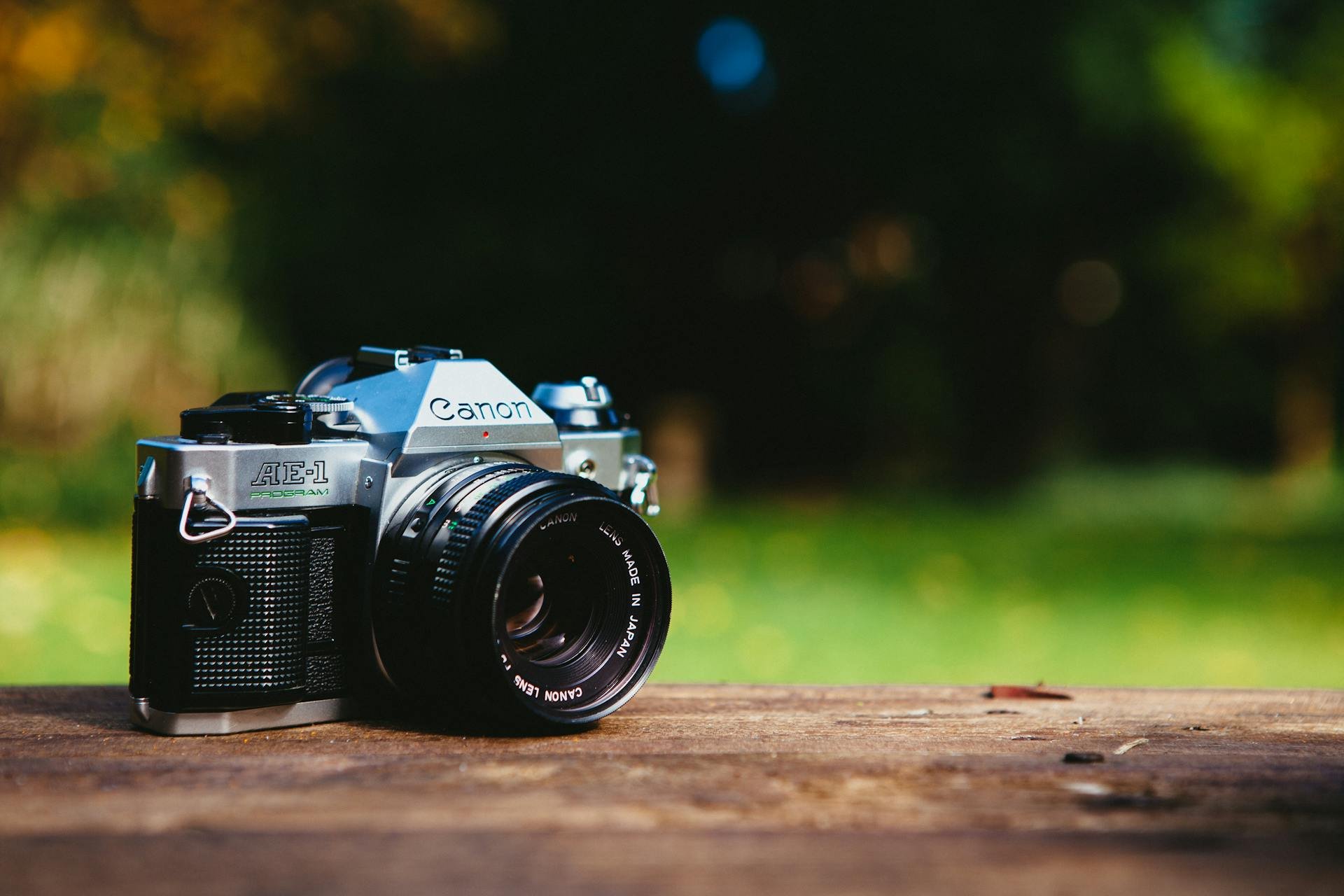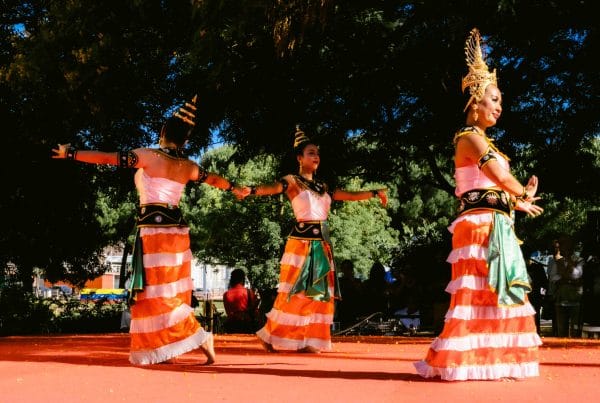A film Single Lens Reflex (SLR) camera is a great entry point for those wanting to take their photography to the next level. Many photography schools recommend their students get an SLR body and a nifty fifty lens as their first setup. Indeed, such a kit can cover 90% of a learning photographer’s needs. A classic example is a Canon AE-1 with a 50mm F1.8 lens, this one is very popular because of the ease of use of the camera and the wide availability of it online. Another popular option is the Nikon FE/FE2 with a similar 50mm F1.8 Nikkor lens. When these cameras came out in the late 70s & early 80s, they were considered semi-professional tools – which makes them very capable of taking high-quality photos whether its street, portraits or landscapes.
Brands and models:
These days there is a wide variety of used film camera bodies available from online and physical camera stores specializing in analogue gear. So if you can’t get your hands on a Canon or Nikon, there are various other high-quality Japanese brands to choose from. One of the top makers of cameras and optics is Olympus. An Olympus OM1/2 is a sleek, compact SLR body that is almost pocketable, and the Zuiko 50mm F1.8 it usually pairs with is as sharp as any lens you will ever use in your photographic career.

Olympus OM-2 with a “nifty-fifty” f1.4 lens
Other notable makes and models include the Pentax K1000, Pentax Spotmatic, Minolta SRT, Minolta X-700, Nikon FM2/3, Canon AE-1.
The above have a lot of similar features and bodies as well as a huge variety of great affordable lens options – you can’t really go wrong with any of them. Some of them like the Nikon FM and Pentax K1000 don’t even need batteries to operate, apart from the light meter, which makes them very reliable.
SLR vs. Rangefinder
One common characteristic of all SLR cameras is the reflex prism which projects the image from the lens, into the camera viewfinder via a small mirror. This allows an accurate image of the final photo and allows the viewer to focus on the subject accurately. What you see is what you get when exposing the image, this is opposed to the rangefinder system such as the Leica M6 which is a rangefinder system. A rangefinder uses parallax correction to let the user compose and focus using an approximated image of the subject. Check out this graphic to help explain the basic concept below:

Courtesy of thedarkroom.com
Rangefinders are in a different league of their own, so we will aim to cover the topic in more depth in a future blog entry.
Operation:
The accuracy of SLRs makes them great for portraits, products, sports and architecture photography, as they provide the most accurate impression of the subject in the frame. SLR cameras also tend to have more capable shutter speeds with the Nikon F6 capable of mind-boggling 30 minutes to 1/8,000 shutter speeds! These numbers are bordering on digital camera speeds, but the Nikon F6 was a professional-level film camera when it came out in 2004 and is considered by many to be the best 35mm SLR in the world.
With SLR cameras most operations are fully manual including focus & aperture – usually controlled by the lens, while shutter speed, film advance and rewind are operated via the body.
Loading film is slightly more tricky with an SLR compared to a point-and-shoot, you need to manually wind the film back into the spool, once you finish the roll. With a point-and-shoot, the camera usually automatically winds the film back for you. On the other hand, the manual nature of SLRs often means you don’t need the battery to operate it, most times the only element that requires a battery is the light meter. On a point-and-shoot, you need the battery for everything to work.
The great thing about using an SLR is the amount of control you get over all aspects of the exposure triangle – shutter speed, aperture size and ISO speed. All of these are usually easily accessible and at your fingertips – with shutter speed and ISO adjustments usually on one dial on top of the camera body and the aperture setting adjusted on the lens.

Canon AE-1 Program with the shutter dial (left dial) and ISO setting (right dial under rewind knob)
Lenses
Perhaps the best reason to get a film SLR is the wide selection of lenses. Want to shoot portraits – get a 50mm lens, for street photography – a 35mm, landscape photo? – a 28mm or wider will work great. Not to mention zoom lenses that cover most of the popular focal lengths. There is truly a lens for every occasion – the 2 biggest Japanese camera companies, Nikon and Canon released hundreds of camera lenses for their systems over the years for all kinds of photography and at various price points. Other manufacturers such as Asahi Pentax, Minolta and Mamiya also manufactured a range of lenses for their own camera bodies. Usually, each manufacturer has their own lens system, Nikon film cameras had the Nikon F mount, Canon had the FD mount, Pentax with the K-mount. There are also universal mounts for older systems such as the screw mount also known as the M42 mount which allows you to use vintage Leica lenses(!) on your Pentax Spotmatic for example.
If you are just diving into the world of SLRs – I recommend a trusty 50mm or “nifty-fifty” as your first lens, as well as the 35mm lens (a jack of all trades) which can suit most everyday situations. Don’t worry too much about f speeds – anything f2.0 or smaller will be suitable for giving you a nice background separation or “bokeh” effect, do note that a smaller f-number corresponds to a larger aperture, meaning the lens will allow more light in. On the flipside lenses with a bigger f-number mean a smaller aperture which is better for landscapes where all parts of the photos should theoretically be in sharper focus. Large aperture lenses tend to be slightly more expensive so choose according to your budget.

Shallow depth of field achieved by a f1.4 aperture (note the swirly bokeh)
In conclusion, SLRs are a great tool to level up your photography skills – you have all the controls for making exactly the kind of picture you want at your fingertips, plus a large selection of lenses to make your photos as versatile as your skills.





